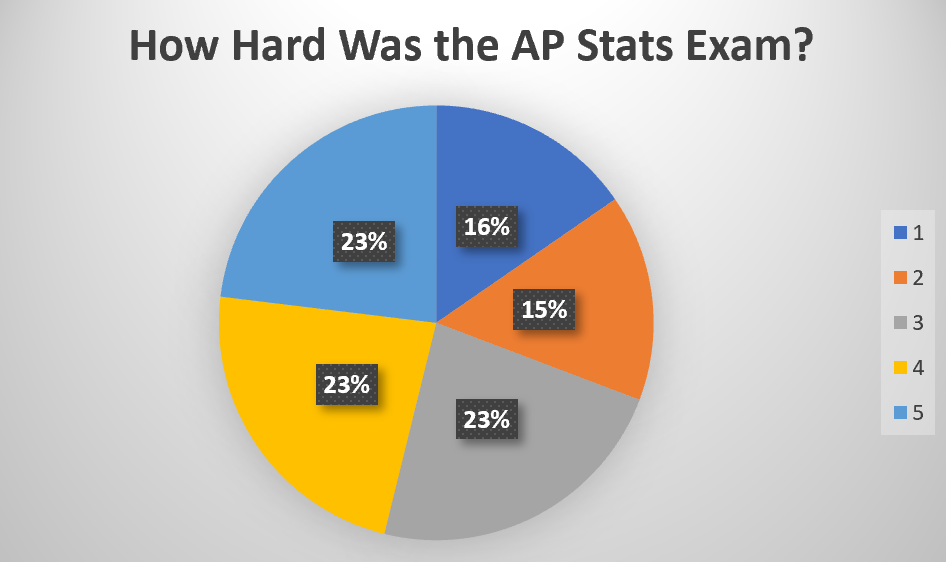Is AP Statistics Hard? Is AP Statistics Worth Taking?
4 min read•june 18, 2024
Harrison Burnside
AP Statistics 📊
265 resourcesSee Units
Overview 📈
AP Statistics will probably be more difficult than the other math classes you've taken (besides Calculus 😂) since it doesn't just involve math; it involves analyzing qualitative, as well as quantitative, data! However at the same time, the class is totally doable 💪 Concepts build on each other pretty quickly, so make sure to keep up with the work and ask questions 🤔 if you're confused.
Lots of people, including myself, consider Statistics to be half English and half math! There are whole units that don't have a single equation or an ounce 📐 of math 😱
On the test, you answer multiple-choice questions (MCQs 🧐). The current format is as follows:
- 40 MCQs (Multiple Choice Questions)
- 90 Minutes (a.k.a 1.5 hours) ⌚ to solve those MCQs ✅
- That math 📉 works out to about 2 minutes and 10 seconds per question ⌛
Then, you'll answer 6 free-response questions in an hour and 30 minutes. A calculator will be by your side the entire time, so don't worry! Check out these articles to get an idea of the questions you'll see:
- 📝 Read: AP Stats - Past FRQ Prompts
Data 📊
Here are the score distributions from 2019 + 2020:
2020:
- 5: 16.0%
- 4: 20.6%
- 3: 22.9%
- 2: 21.6%
- 1: 18.9%
2019:
- 5: 14.5%
- 4: 18.0%
- 3: 26.7%
- 2: 19.7%
- 1: 21.1%
In AP Statistics, the pass rate is generally around 60%! That's pretty good for an AP Exam 🎊
A simple random sample (Unit 3 coming in clutch 🤩) of AP Statistics Fiveable users rated how hard the AP Stats Exam was on a scale from 1 star ⭐ (easy peasy) to 5 stars ⭐⭐⭐⭐⭐ (super hard). Here are the results:

Self-Created Using Microsoft Excel Graphs. This pie chart shows that many students have mixed feelings about how hard the AP Stats exam is. A reassuring factor from this graph is that many students think that it's an average level of hard 👍
The mean rating (that's on one 1️⃣-variable data analysis) for the AP Stats exam was 3.22/5 😂
Resources to Dig Deeper 📚
- Video reviews and study guides for each unit
- AP Stats Cram Chart and Review (coming soon)
- A list of the best Quizlet decks by unit (coming soon)
Other Factors to Consider 🤔
- Motivation. In AP Statistics, concepts interconnect with each other, so falling behind can seriously hurt you in the long term.
- The workload. Although this is a math class, expect tons of repetitive problems. Expect plenty of worksheets to finish outside of class.
- The internet is your best friend. If you feel like you're not getting enough support in the classroom, there are a lot of online resources to help out.
Tips & Words of Wisdom 💬
First, don't just memorize 🧠 formulas and vocab. Try to understand the reasoning behind each concept. There's a large focus on graphing and real-world applications, so make sure to figure out the meaning behind formulas and rules.
Second, brush up on your algebra skills. A lot of times, students will understand the statistics concept part of a question, but they'll make mistakes because of small algebraic errors. Check out this stream:
🎥 Watch: AP Stats—FRQ Reviews with Bob Amar 🎊
Third, practice FRQs! Try to answer questions in the time limit. When you finish, look at the answer key and compare your work. Remember that every time you correct a mistake, you learn something new.
Lastly, let's hear 👂 some words of wisdom from the Fiveable community:
"Break it down! Everything in Statistics is connected; once you make these connections and understand every step, the overall process is easier to understand."—Jane Zhao
"AP Statistics requires determination and resilience because there will undoubtedly be certain aspects that are hard to understand but do not give up! This subject is very broad and can be found in the real world, making it all the more beneficial. So don't give up if you don't grasp a concept quickly. Keep trying!"—Dishitar
"Absolutely worth it!! As someone who loves politics and polling, AP Stats has helped me understand what the heck they mean by margin of error, sample size, and causes of bias! Also, AP Stats is multidisciplinary, applicable in the humanities, social sciences, and STEM!"—Brandon Wu
Closing statement 💭
All in all, AP Stats is definitely 💯 worth taking. It's extremely useful for most STEM 🧪 fields, like physics, chemistry, and biology. Even if you aren't going into STEM, statistics is a new type of math that you just might like if you try 🙃
If you start to find it difficult, don't get discouraged! You'll come out of the class knowing more than you did before, and Fiveable 5️⃣ has plenty of free resources to help you along the way 💪
Browse Study Guides By Unit
👆Unit 1 – Exploring One-Variable Data
✌️Unit 2 – Exploring Two-Variable Data
🔎Unit 3 – Collecting Data
🎲Unit 4 – Probability, Random Variables, & Probability Distributions
📊Unit 5 – Sampling Distributions
⚖️Unit 6 – Proportions
😼Unit 7 – Means
✳️Unit 8 – Chi-Squares
📈Unit 9 – Slopes
✏️Frequently Asked Questions
📚Study Tools
🤔Exam Skills

Fiveable
Resources
© 2025 Fiveable Inc. All rights reserved.